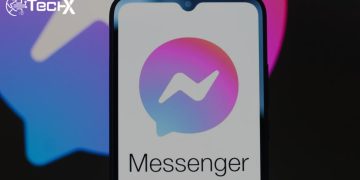Meta has launched its first smart glasses with a built-in display, aiming to change how people use artificial intelligence daily. CEO Mark Zuckerberg announced the Meta Ray-Ban Display at the Connect developer conference. Priced at $799, these glasses include a small display in the right lens for notifications and come with a wristband controller that lets users give hands-free commands without needing a phone.
Glasses Made for AI Use
Zuckerberg explained that smart glasses are the natural way to access what he called personal superintelligence. The glasses allow people to stay connected with the real world while using AI to help with memory, communication, and quick information. During the live demo, a few glitches appeared, but the audience responded positively, seeing the potential of technology that blends real-life presence with digital support.
Pricing and Extra Models
The new Meta Ray-Ban Display glasses will start shipping on September 30. Meta also announced two other models. The Oakley Vanguard, designed for athletes, is priced at $499. Another updated Ray-Ban model, priced at $379, now offers stronger battery life and better cameras. By releasing products at different prices, Meta hopes to reach more people, from everyday users to fitness lovers and tech fans.
Also Read: Mark Zuckerberg Predicts End of Smartphones; Smart Glasses to Replace Them
Analysts Expect Slow Start
Experts believe sales of the $799 glasses may be slow at first, as the technology is still new. However, they see this as an important step toward Meta’s future Orion glasses, planned for 2027. According to IDC, global shipments of AR/VR headsets and smart glasses are expected to rise nearly 40% this year. Meta’s affordable Ray-Ban line is seen as an important factor in driving this growth forward.
A Step Toward Orion Glasses
The new display glasses may not change the market overnight, but they help Meta prepare users for bigger advances. The $799 Ray-Ban Display works as a bridge product until the full Orion glasses arrive. By starting small with notifications and AI features, Meta hopes users will slowly get used to wearing smart glasses daily, making future advanced versions easier to accept.
Growing Competition in Wearables
The smart glasses industry is still young, but many big tech companies are already competing. Apple, Google, and Microsoft have all tested similar products in the past. Meta’s entry shows its clear goal to remain strong in the hardware race. With AR and VR shipments expected to rise fast, Meta is working hard to secure its place as a key player in wearable computing.
Challenges Meta Must Face
This launch comes as Meta is facing criticism for safety issues on its platforms, especially regarding younger users. At the same time, the company is investing heavily in artificial intelligence, hiring skilled workers from rivals and building custom chips. These smart glasses are not just about consumer sales—they also show investors and the public that Meta is serious about staying ahead in new technology.
Conclusion: A Big Leap Forward
Meta’s $799 smart glasses show the company’s vision of combining everyday life with artificial intelligence. While early sales might be small, the launch proves Meta’s long-term commitment to wearables. By offering different prices and planning for the 2027 Orion glasses, Meta is building a strong base for the future. These smart glasses could change how people use technology, blending digital help with real-life presence in simple ways.















